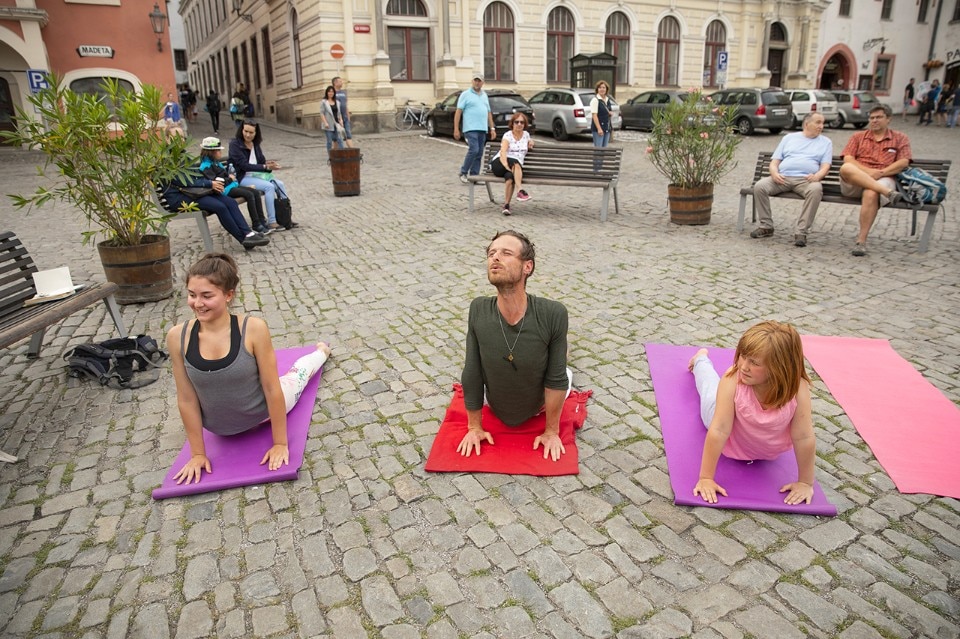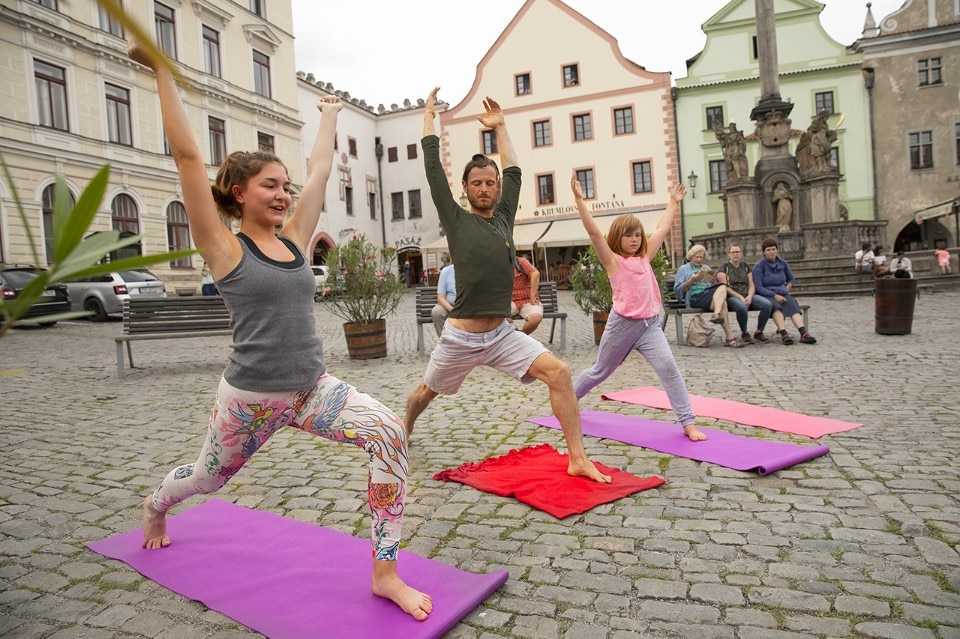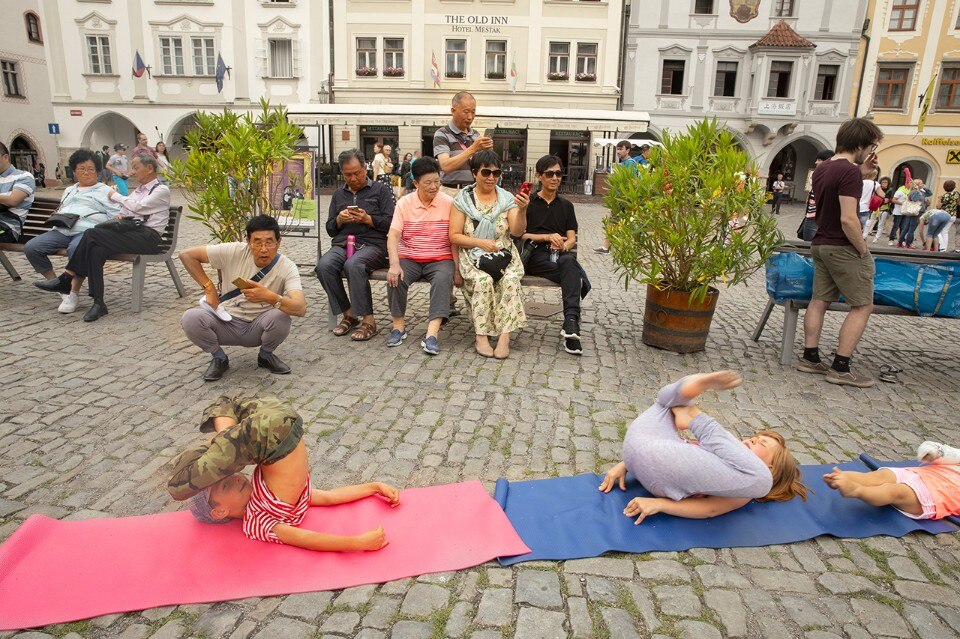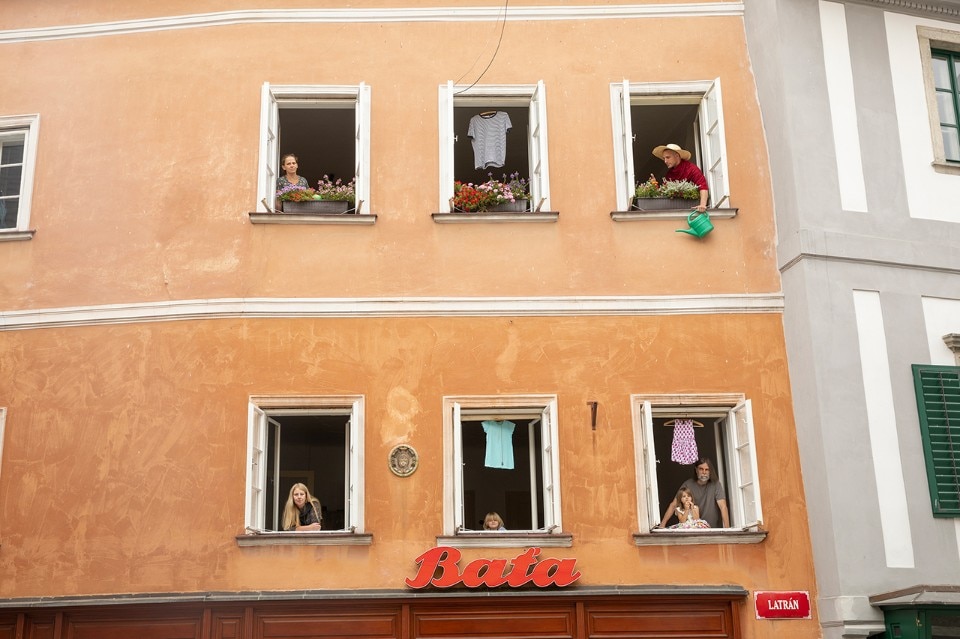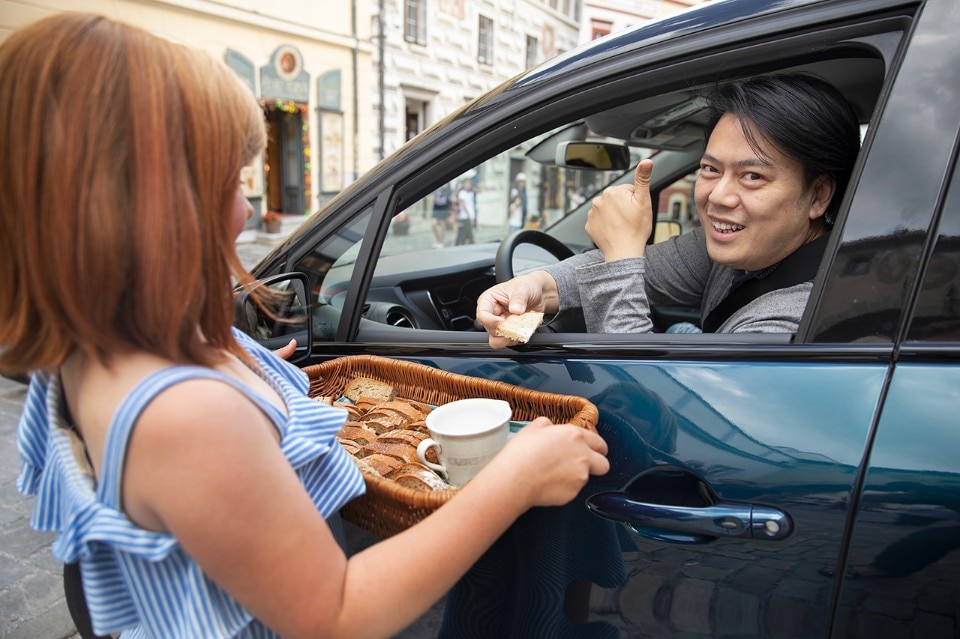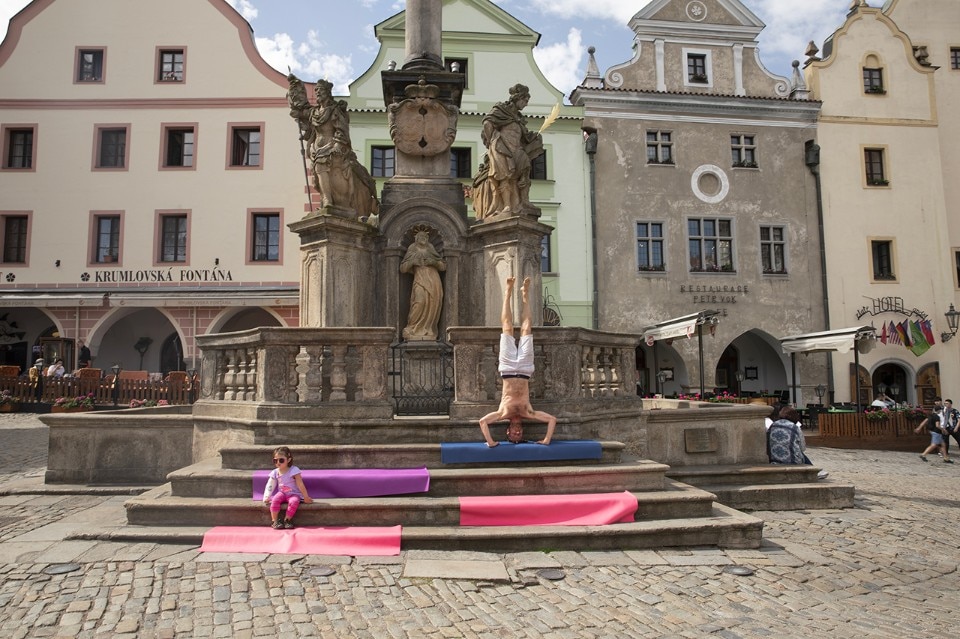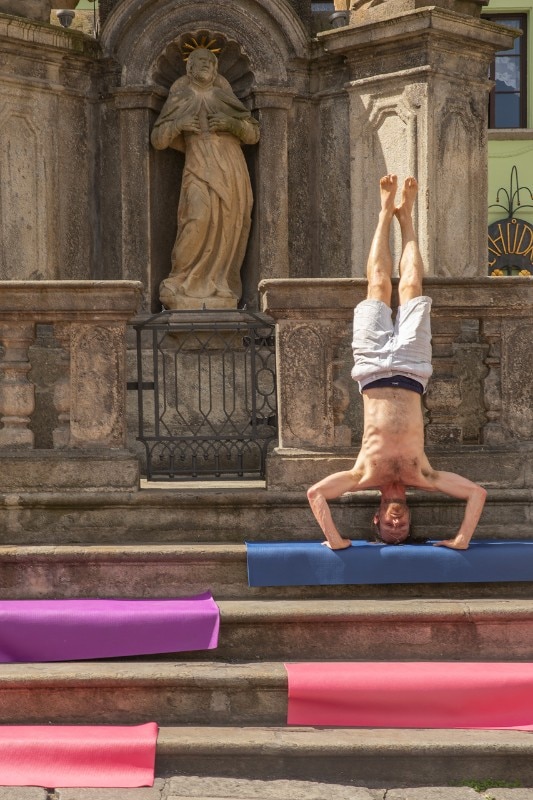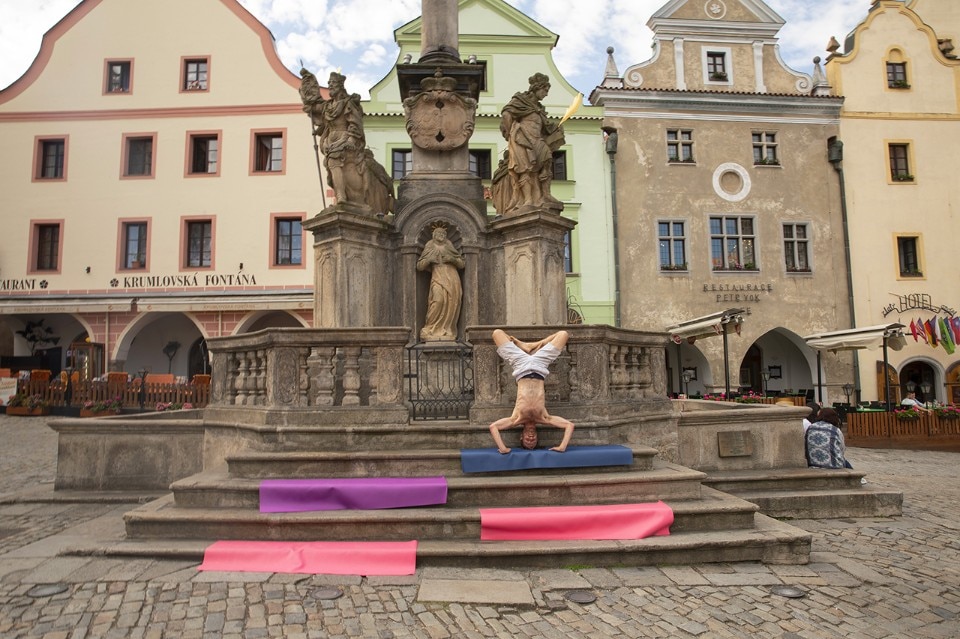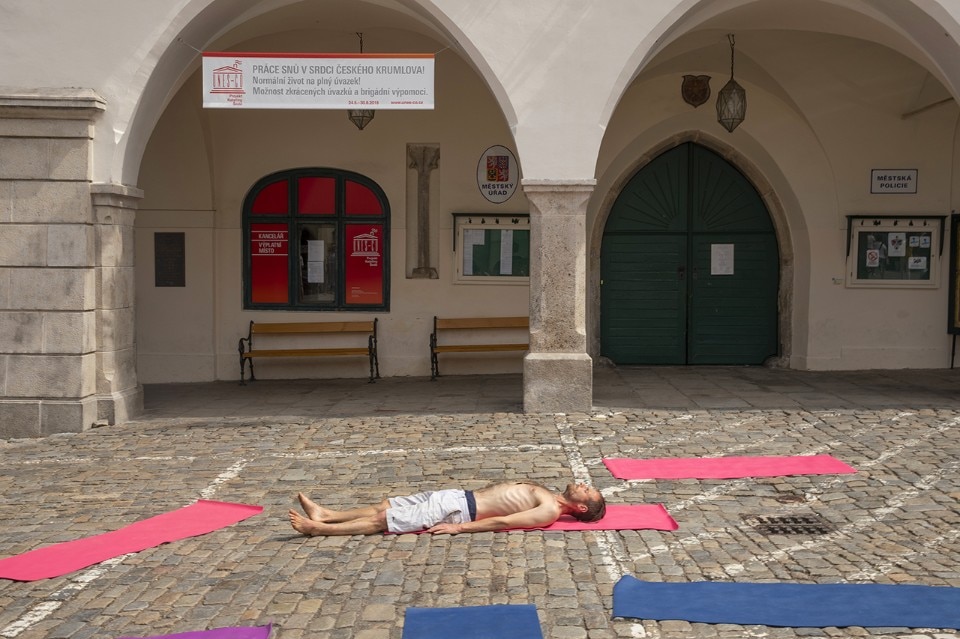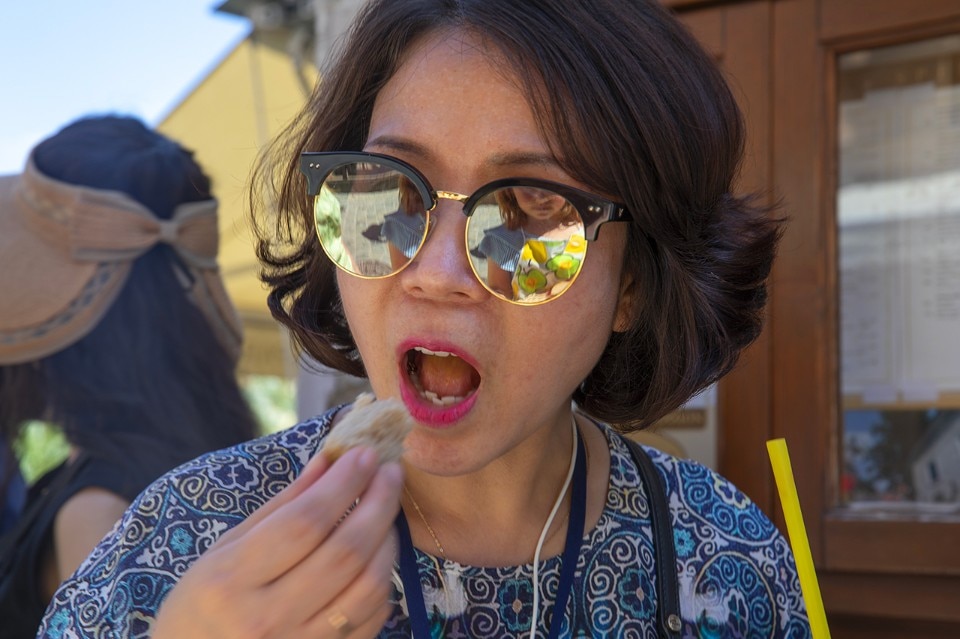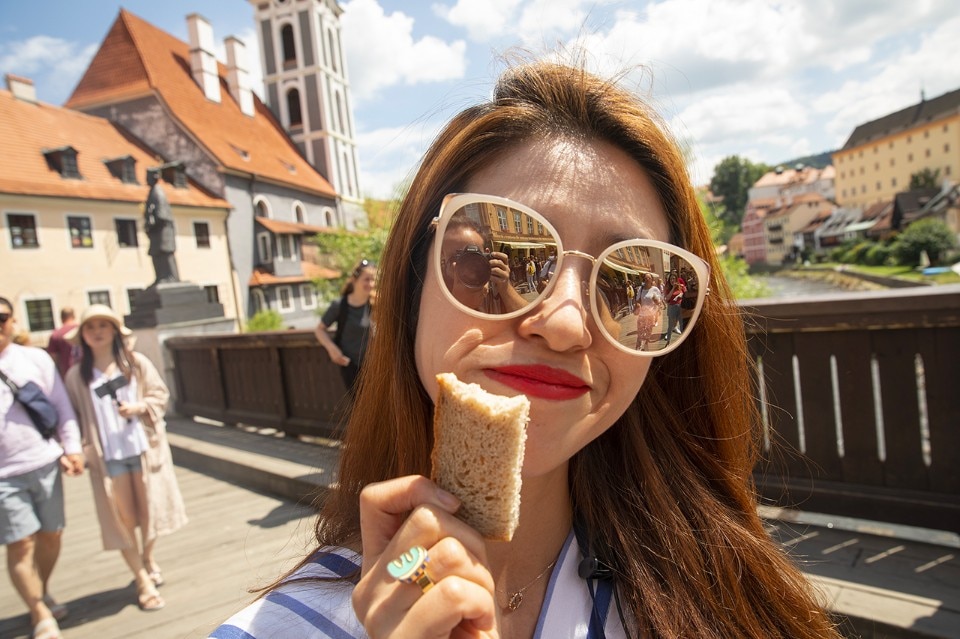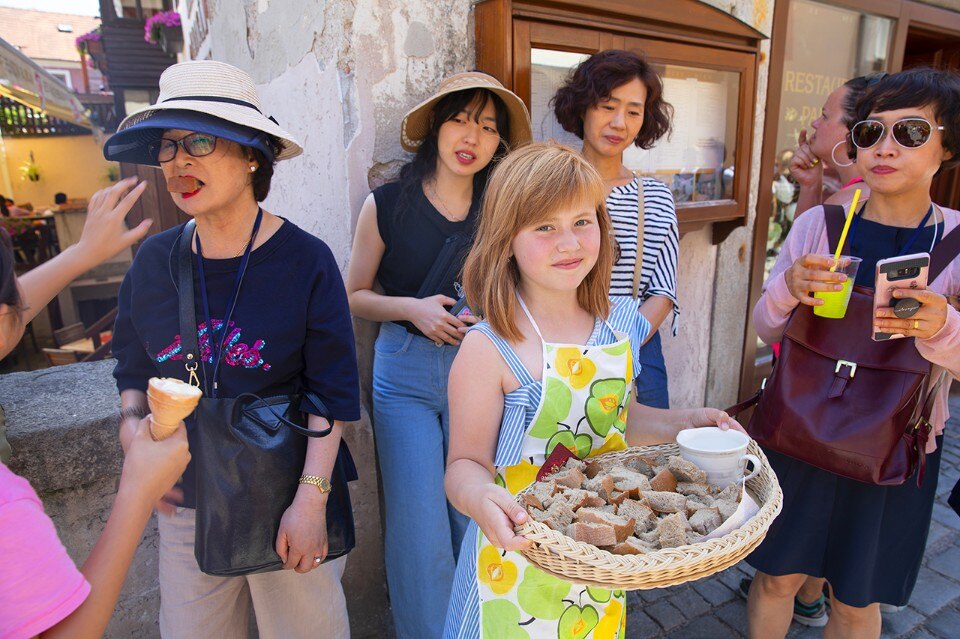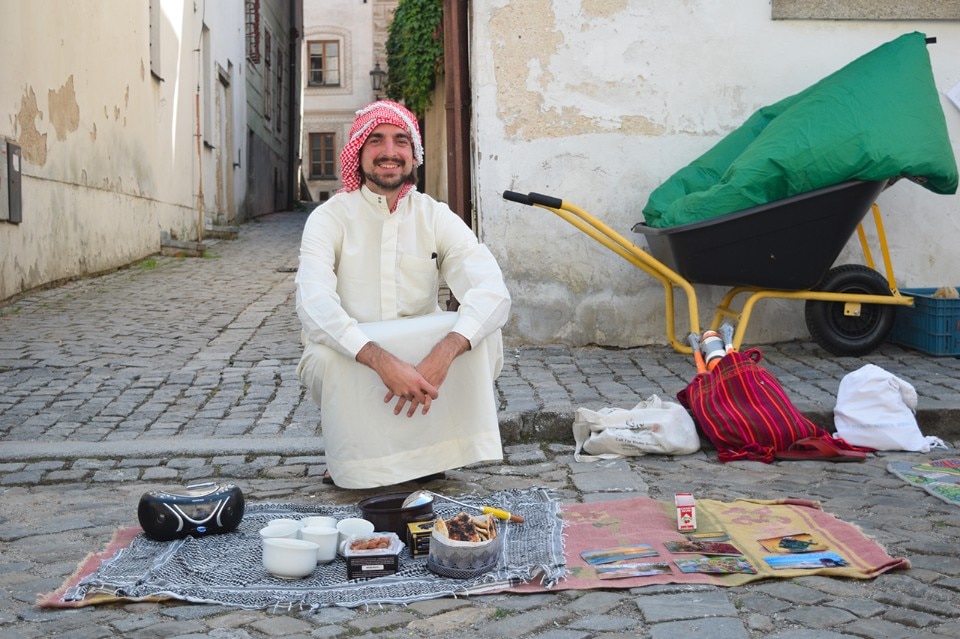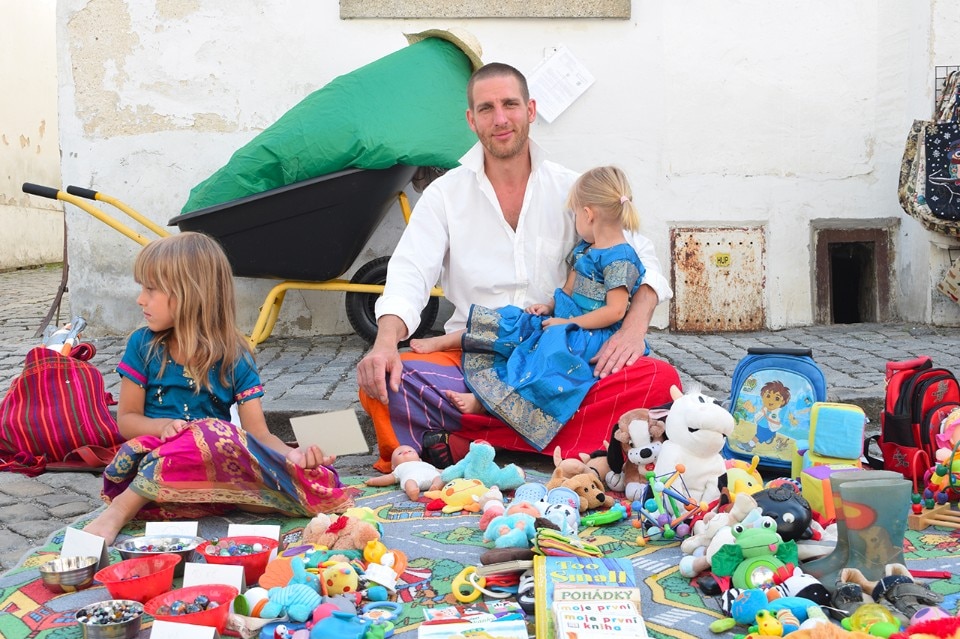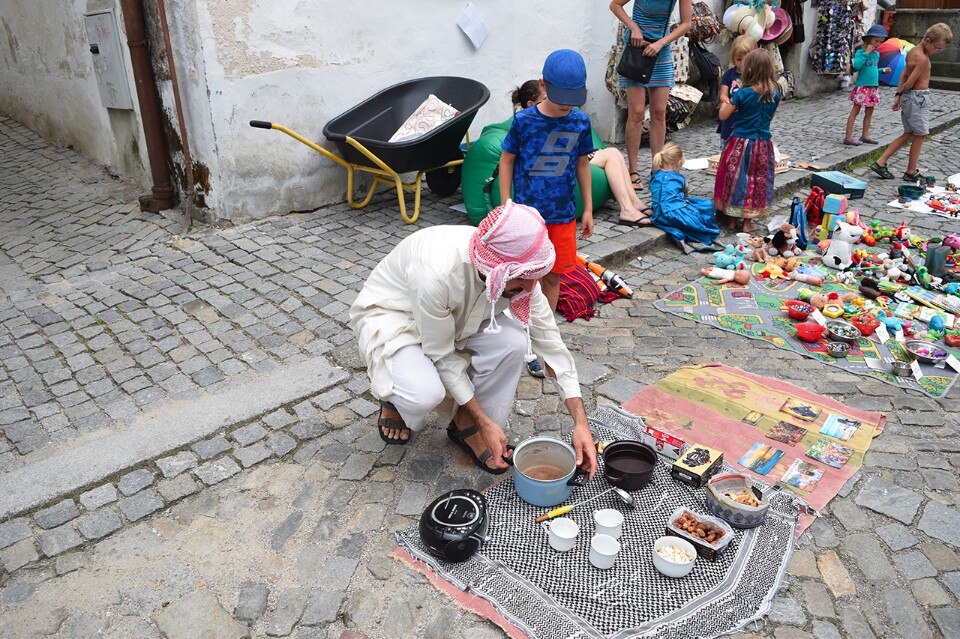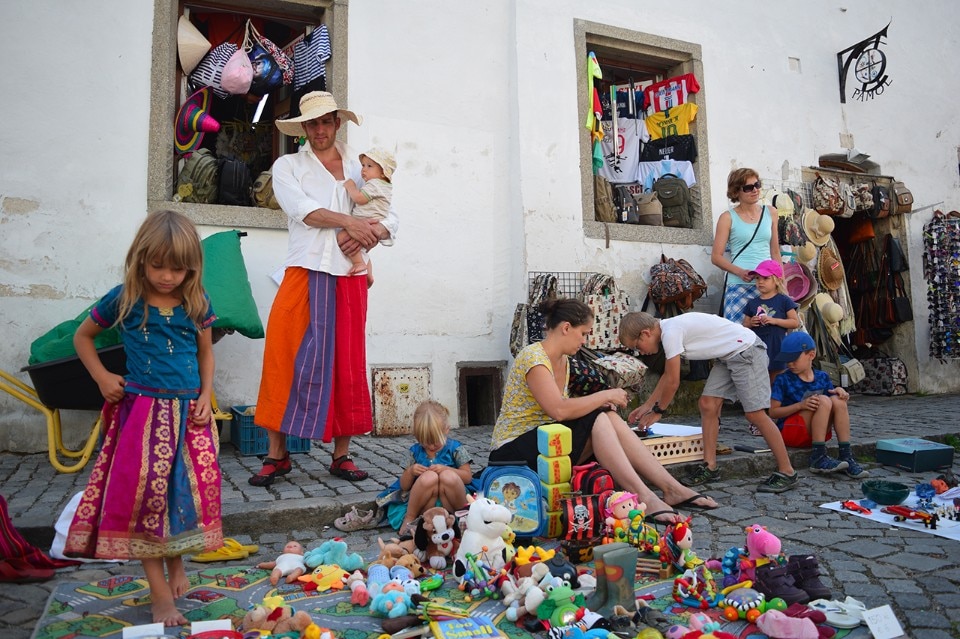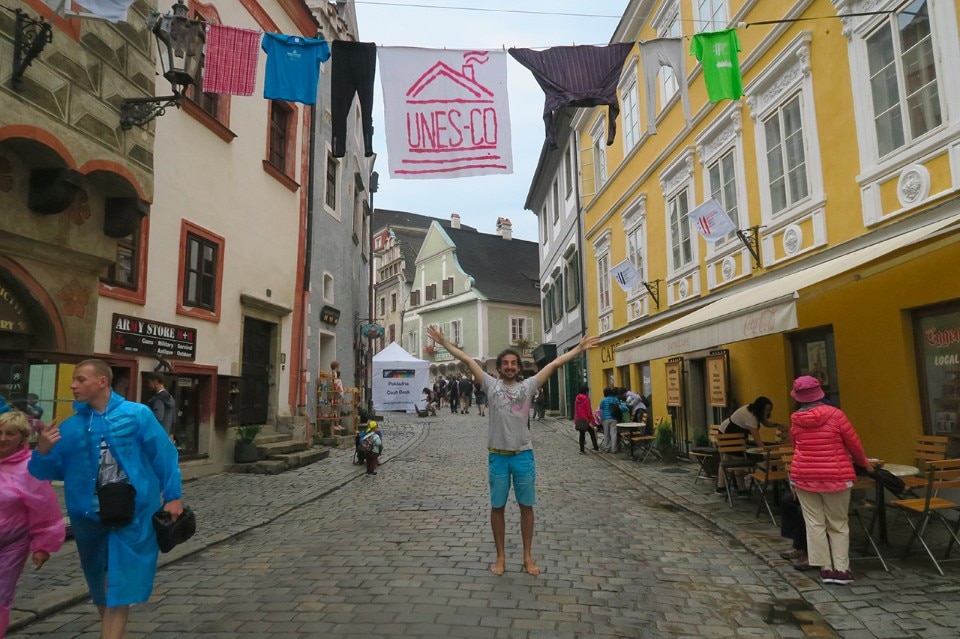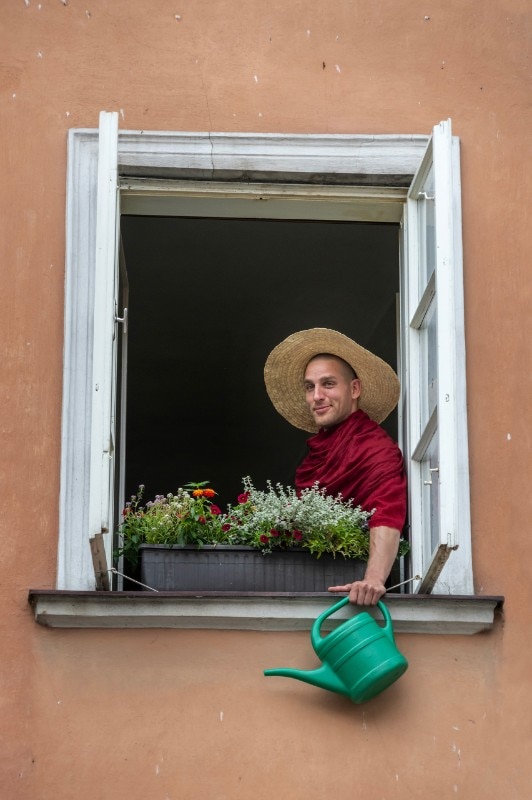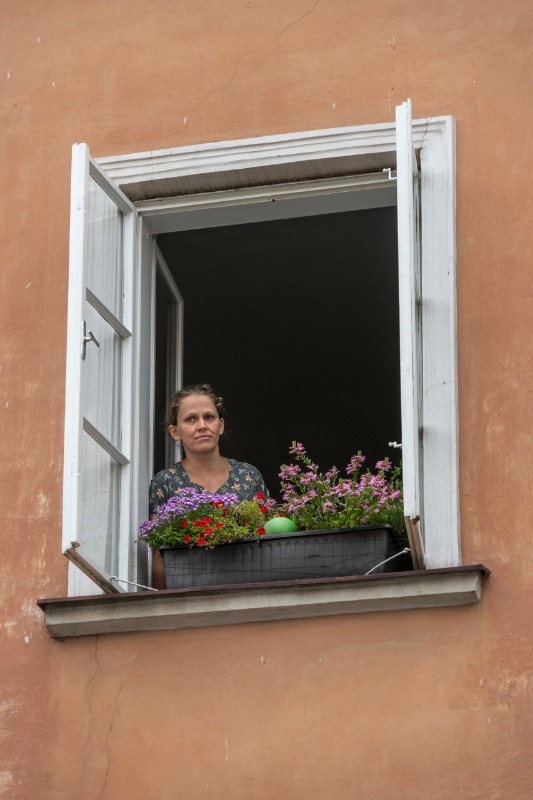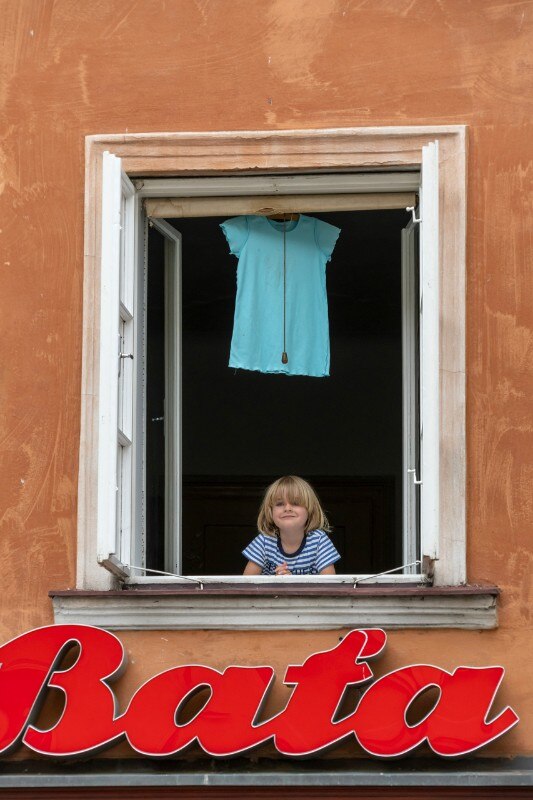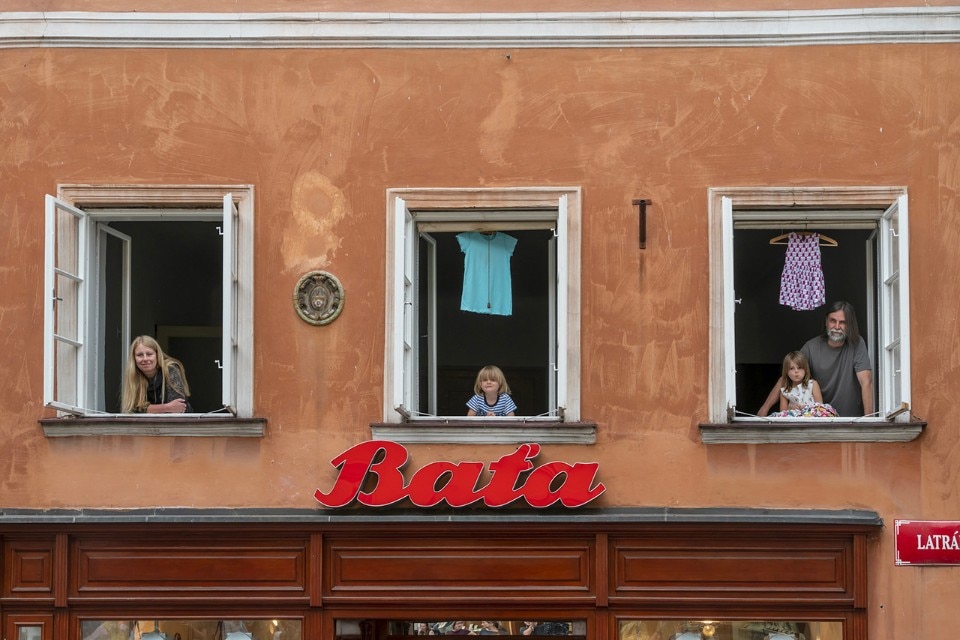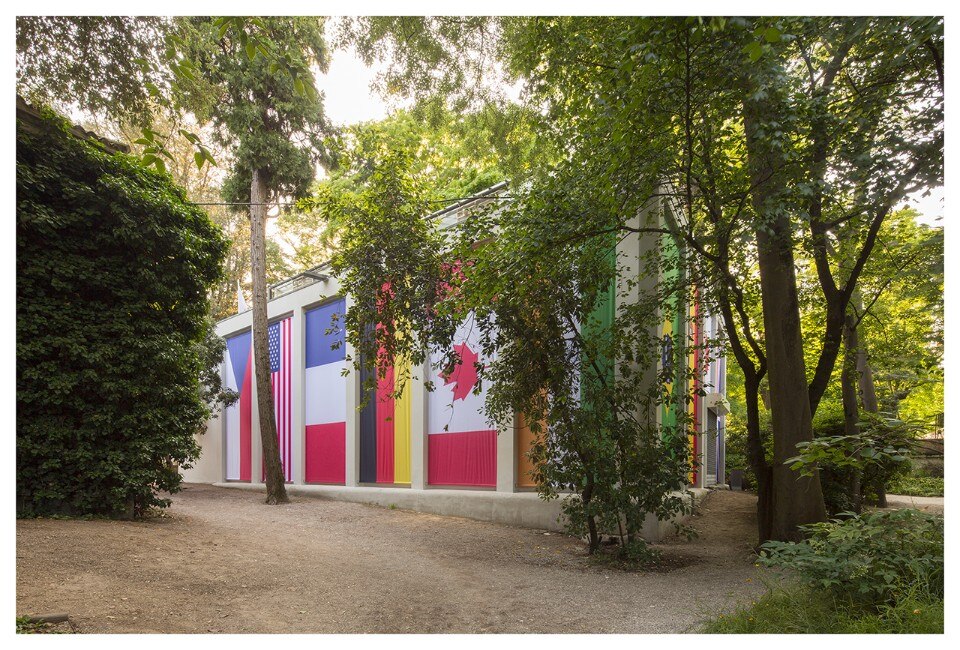For the last 20 years, Kateřina Šedá has been active in public spaces with interventions based on direct presence in the area and direct contact with the local residents, and with research into social and behavioural dynamics which are specific to the areas that she studies. She has always moved within the field of contemporary art, but her methods often touch on associated areas, such as architecture, urban planning, sociology, anthropology and ethnography. On the occasion of the 16th edition of the International Architectural Exhibition in Venice. dedicated to the theme of freespace, the artist will be representing the Czech and Slovakian pavilion with UNES-CO, a project which focuses on the situation that has emerged in Ceský Krumlov, a town of 13,000 inhabitants which until a few years ago was marginalised and neglected, to then be declared a UNESCO World Heritage Site and consequently become a very popular tourist destination, a situation which however has had negative consequences for the local inhabitants.
Gabi Scardi: How did the UNES-CO project start?
Kateřina Šedá: My project touches on an often-discussed topic – the growth of tourism and the problems that come with it. The biggest problem is the gradual depopulation of town centers and the migration of its population to its peripheral areas. Unfortunately, these turn into empty backdrops where virtually nothing like a “normal life” exists. The main objective of my UNES-CO project is to analyze and name the problem of a town overburdened by tourism, to stir up debate, to get as wide a range of opinions as possible, to find a common denominator for the problems, and, above all, to process it well. This is why I mostly focus on terrain work, I establish contacts with people, I discuss their problems, and I look for ways that don’t exist simply in the realm of theory.
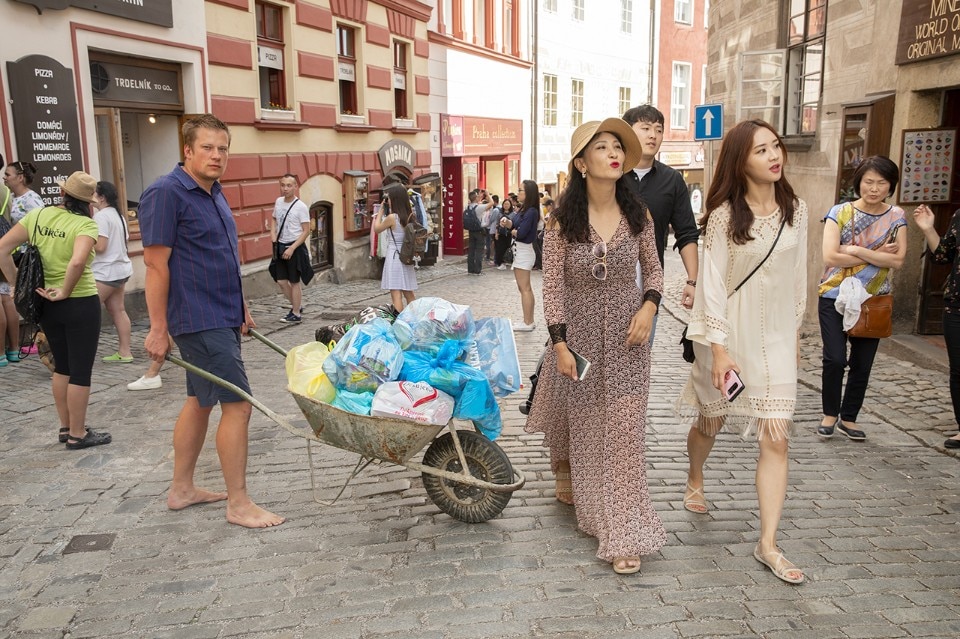
 View gallery
View gallery
I primarily chose Český Krumlov for the realization of my idea – I visited the town last summer on the invitation of Hana Jirmusová Lazarowitz, the Director of the Egon Schiele Art Center. I didn’t want to go much at first – an overcrowded tourist site was the last place I’d want to go with my kids in the summer. What I experienced, though, far “surpassed” my expectations. You simply couldn’t move through the streets, and I felt like I was in a crowded cage. Houses where no one lived. Stores that nobody needed. I had this intense feeling that I had seen something like this already. “These are incredible thieves!” My mother said, staring at the price of something in a shop window. “This no place to live!” she finally concluded. I stared and tried to remember. Everything seemed kind of familiar to me, yet still turned completely inside-out. These were the signs of a marginalized location! At first glance, it might seem like a totally absurd comparison of diametrically different places; when you look at it deeper, though, you find plenty of points in common between socially marginalized locations and the world’s most beautiful UNESCO World Heritage towns.
How did you conceive the project?
Since I had decided to approach the old town as a marginalized location, I deliberately used the strategy for these locations in the project: to return a normal life to the site which would be visible in the town streets, to offer people jobs that are needed the most, and to support these employed families by offering them housing directly in the marginalized location. A detailed analysis showed me that the job most-needed in the center of Krumlov was “a person who is visibly leading a normal life”. This is exactly the kind of activity that makes a town a real town and not just a backdrop for tourist activities. So I employed 15 families full-time and provided them with accommodations in the old town for three months (June-August 2018). The fictitious company UNES-CO which I created also offers part-time jobs as well as hourly student work.
The project has been shown in Venice: a historical town in which daily life and activities have been strongly influenced by tourism and a constant flow of people.
The Czech and Slovak Pavilion in Venice is primarily a place where there appeared a way to respond to this phenomenon directly in the Czech Republic. Our pavilion has been transformed into the UNES-CO company, where visitors can watch an event live-streamed right from the streets of Český Krumlov. Tourism has begun to be regulated from a number of sides in Venice, so I was interested in linking both places through this topic.

 View gallery
View gallery

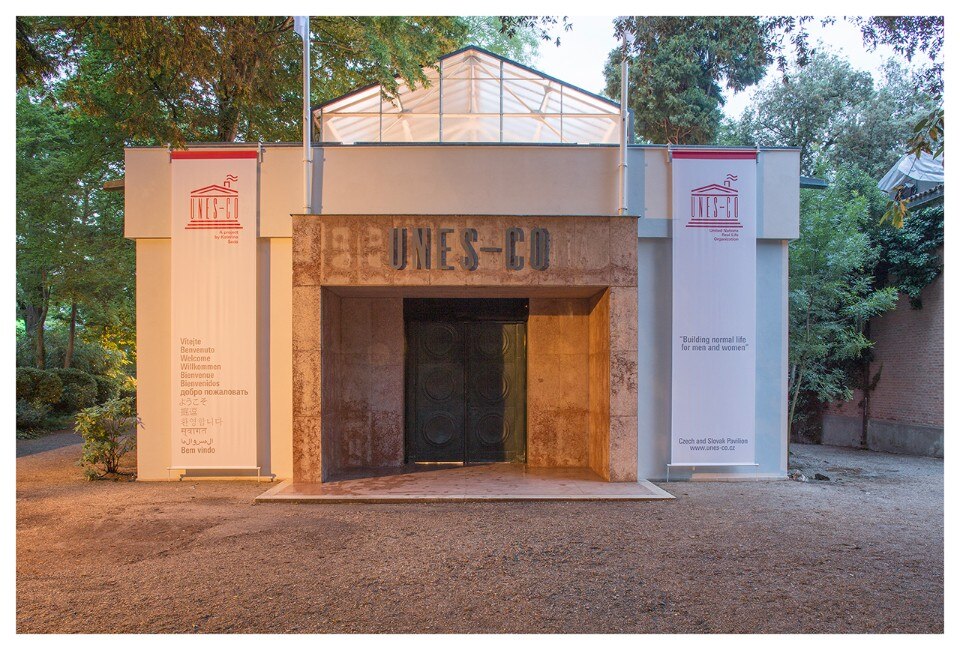



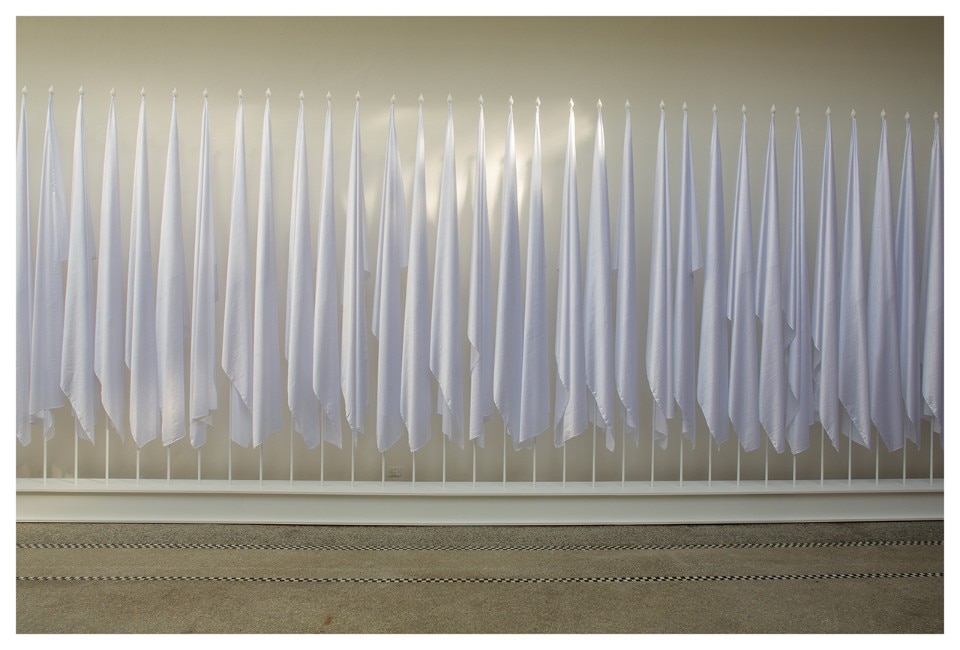

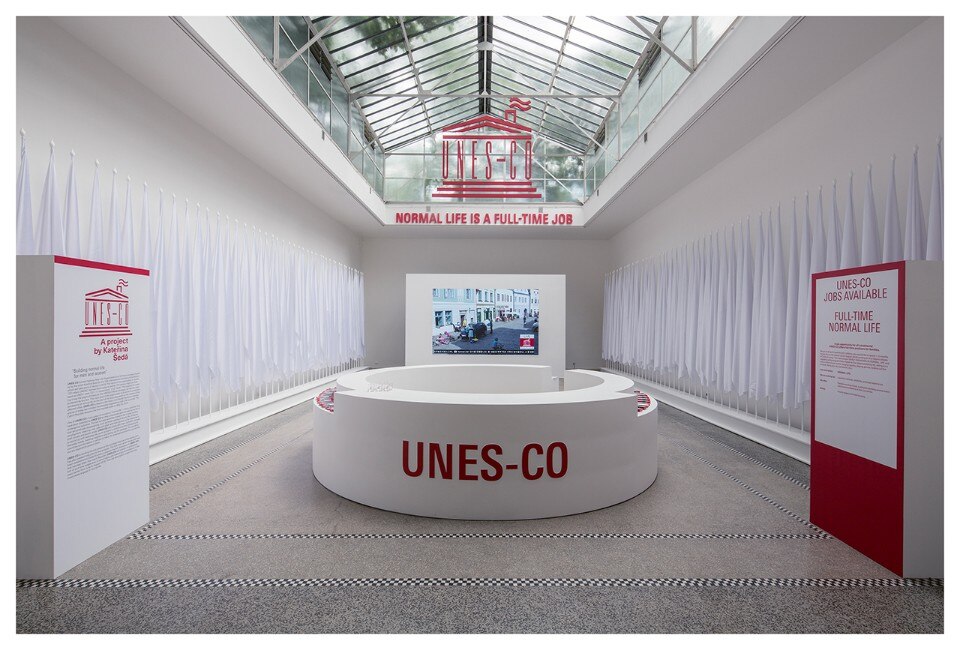

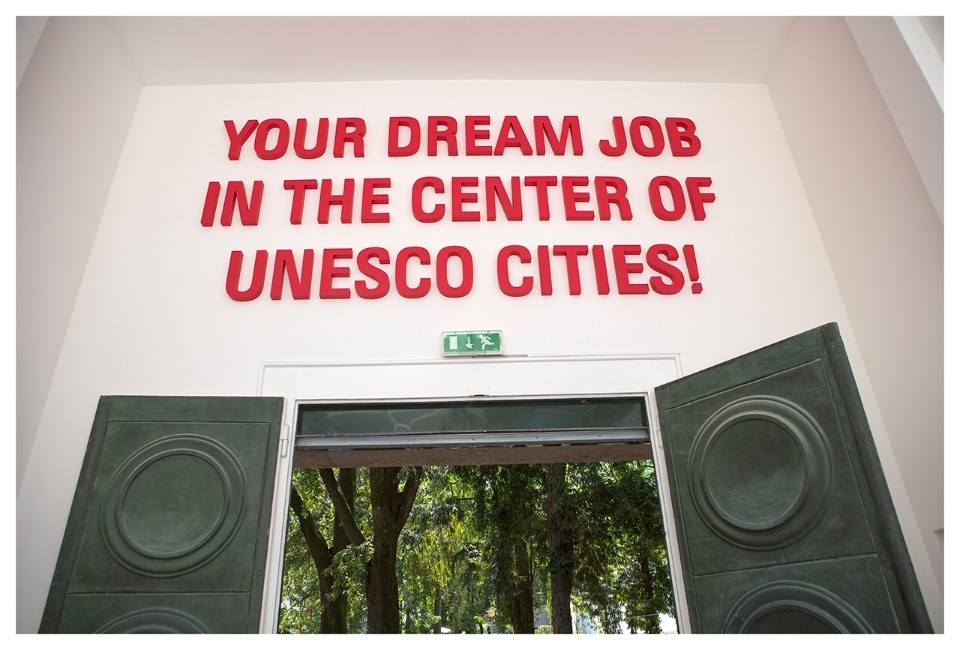
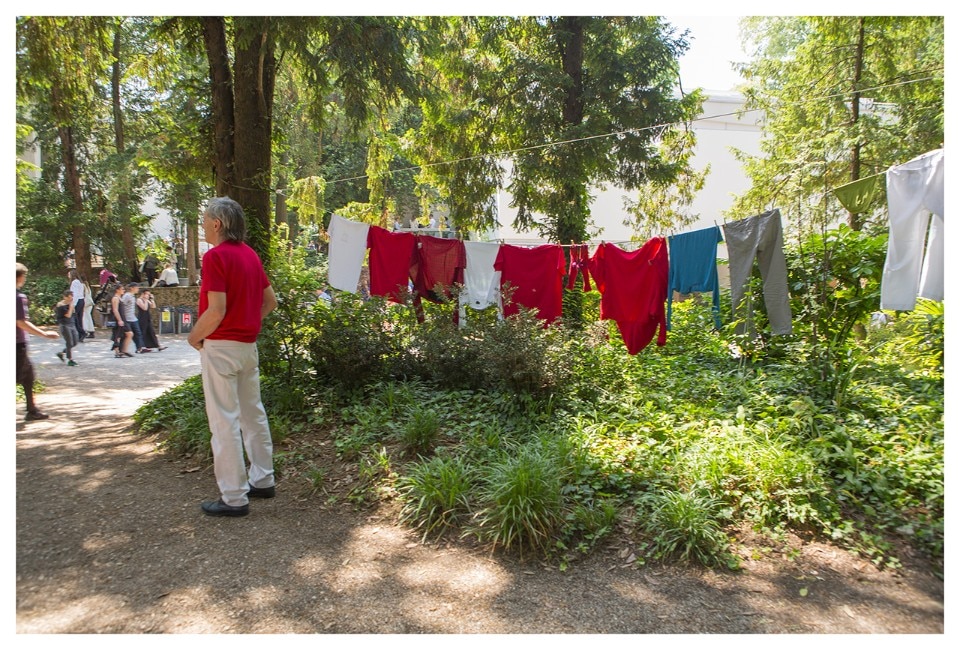
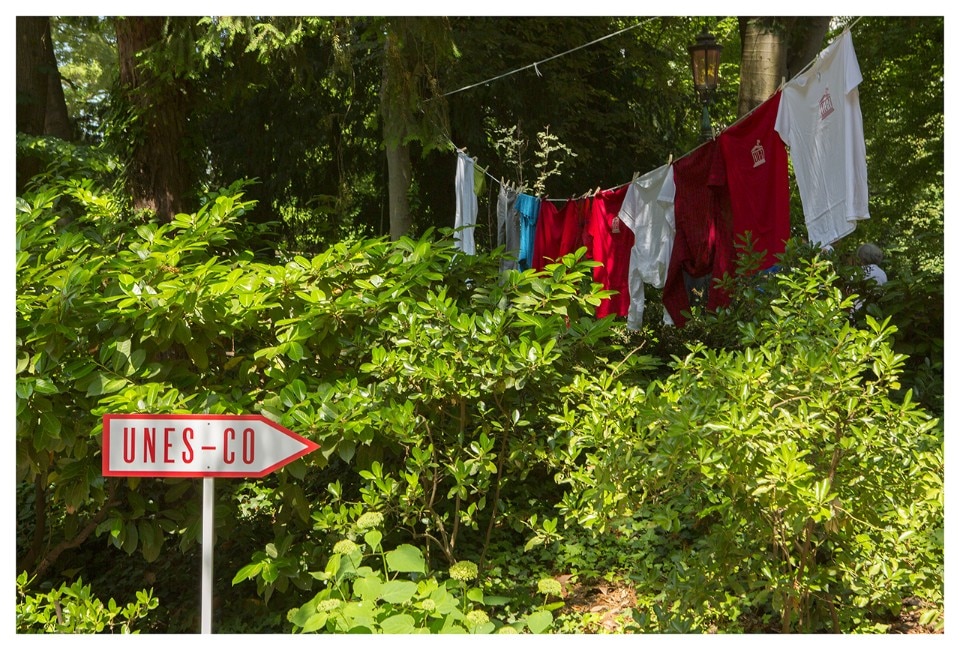
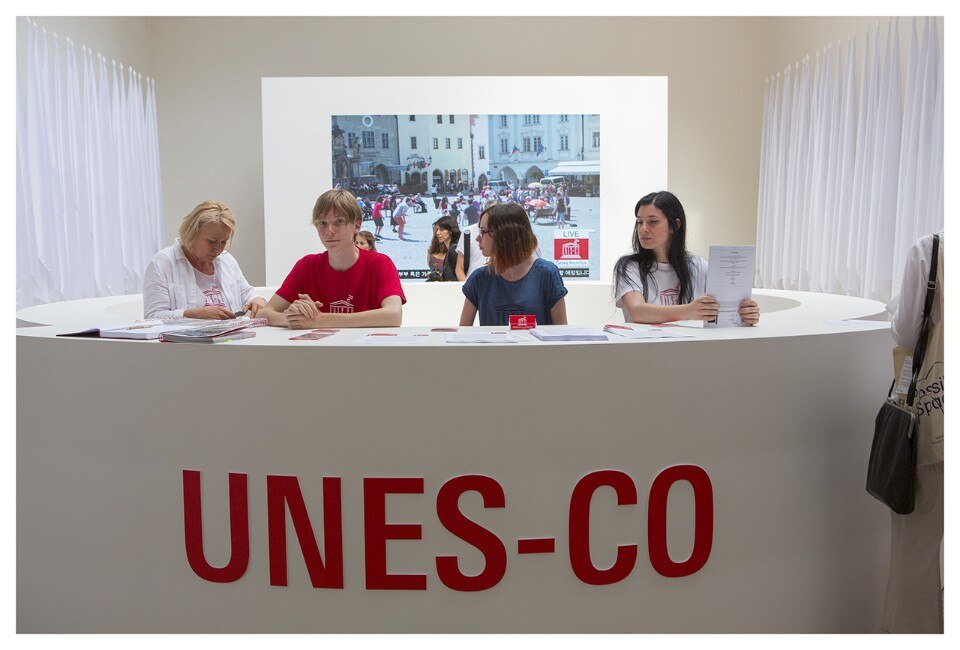
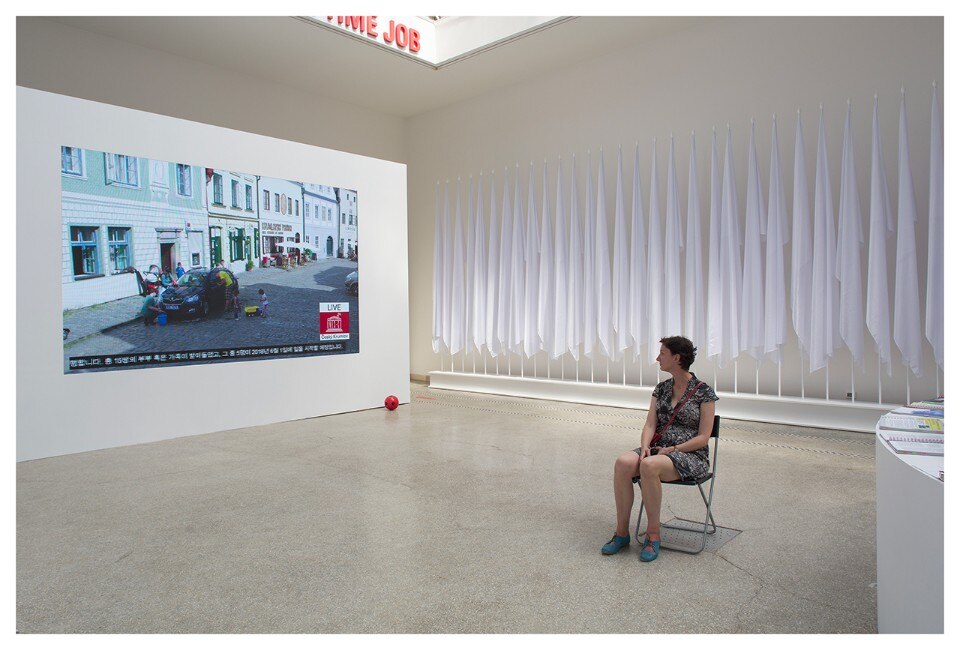
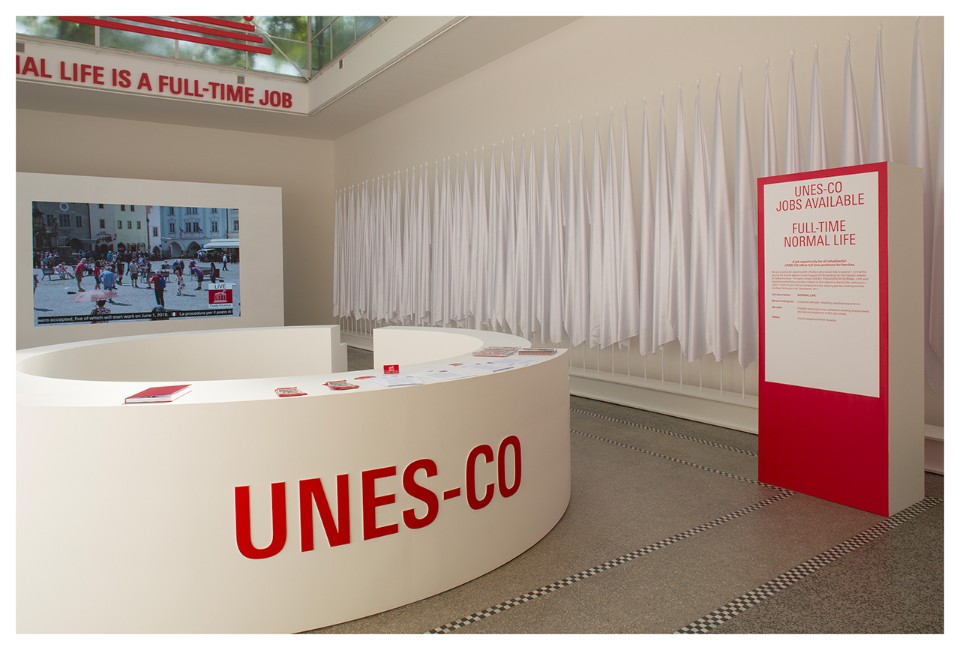
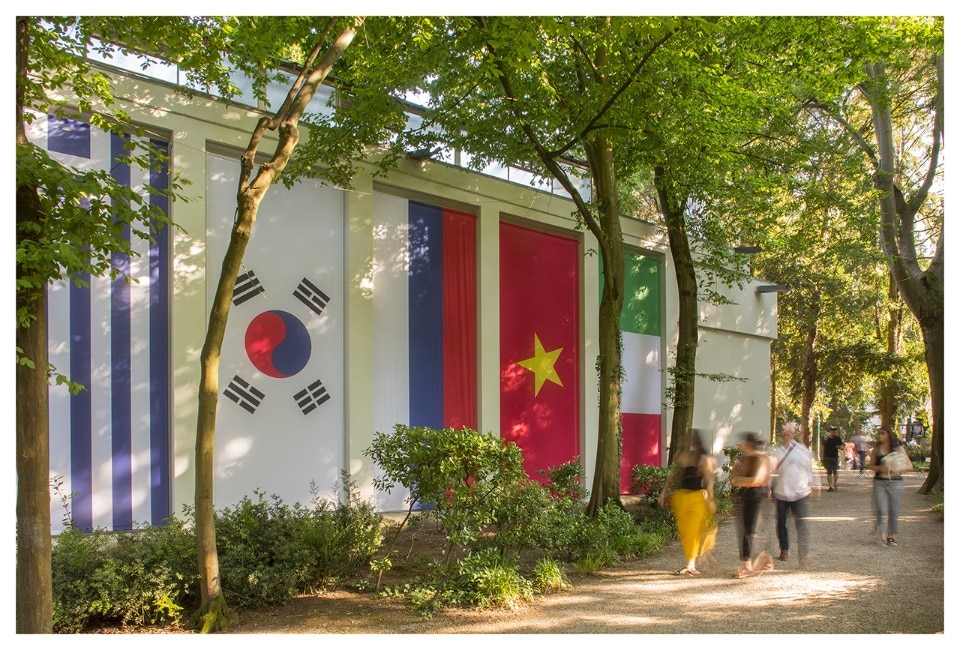
















Can we consider Český Krumlov case as a metaphor? Viceversa, up to which point should art looks at the specific situation from close up?
It’s true that the UNES-CO project is a […]metaphor for all similar locations. After a long-term survey among the local people, I created a “List of Endangered Activitiy Types”; it contains the kinds of activities that local people say have completely disappeared from the old town, or which aren’t present at all and the locals would like to see happening in the center of town. For the most part, these are regular ordinary things like sweeping or taking out the garbage during the daytime, but some of them really make you stop and think. People have even mentioned such banalities like reading a book or sunbathing. At first glance, it may seem that Venice is much worse off when compared to Krumlov. You can feel a constant presence in the air that the locals want to fight for their place and not let it get taken away. The Venetians hang their clothes out and don’t care if they drip on the tourists’ heads, and there’s no way that a local wouldn’t get a place in the restaurant... This doesn’t happen in Krumlov. It’s like the local people have retreated and cleared the field for the tourists, as if they lived somewhere completely different. This is what my project is exploring, and it asks the question, “Who does this place actually belong to?” When I was collecting names and nicknames for the town, many people presented the concept of a Stolen Town. There are a number of UNESCO sites which can definitely be categorized like this. My project is supposed to point to this problem in a kind of absurd abbreviation; it’s definitely working, because it’s caused quite a big reaction among the locals themselves.
When someone is sitting outside on a bench with a book as part of our project, the tourists will start taking pictures right away. Our employees might offer tourists bread with salt, which is a Czech welcoming custom. And the Japanese, for example, are surprised that anyone even lives in the town at all.
You said that your “aim is not to criticize tourism, but to find a way to stop the stranger and make them citizen for a moment”. Could we define this work as a form of activism to raise awareness of citizen, tourists and travelers?
We certainly can. I urge the families I’ve employed, for example, to make contact with tourists. Like when someone is playing soccer in front of their house, they’ll kick the ball to someone passing by. And I think that visitors are interested in something more than what they’re currently finding in Krumlov. For example, when someone is sitting outside on a bench with a book as part of our project, the tourists will start taking pictures right away. Our employees might offer tourists bread with salt, which is a Czech welcoming custom. And the Japanese, for example, are surprised that anyone even lives in the town at all. I expected the project to get a lot of people emotional and excited, and this definitely happened. But it’s not really about the emotions, that’s simply a byproduct. The main thing is to talk about the town, to talk about living in it, to evoke a certain reflex from which some concrete solutions can emerge.
- Title:
- UNES-CO
- Pavillion:
- Czech and Slovak Republic
- Curated by:
- Katerina Seda
- Location:
- Giardini della Biennale di Venezia
- Opening dates:
- until 26 November 2018


